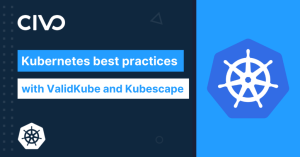
It’s always healthy to take a critical view of any new technology or approach, and cloud finops (financial operations) is no different. As we’re learning about what finops does well, we’re also learning about what needs to be worked on.
While some people will find a great deal of value from finops, mostly by doing things in more optimized ways, others will make common mistakes and cause finops to draw on more resources. Thus the business value that it was supposed to generate doesn’t materialize, or perhaps might even be negative. This is one of the biggest fears about finops.
Here are a few common mistakes to avoid:
Don’t overoptimize cloud resources. Now, I know you want the best performance at the lowest possible cost, but be careful not to take it too far. If you’re constantly resizing your provisioned resources to the absolute minimum required to support the workload requirements, you may end up spending more on monitoring and management tools to find that perfectly optimized configuration.
I’ve seen this recently as enterprises use their automated finops tools to remove and add instances automatically. They are attempting to find that fully optimized configuration where the number of instances provisioned (storage and compute) aligns directly with the number of instances needed to support the application and data workloads for the business.
The only chink in that armor is that you must buy management tools to balance your resource utilization with need. You end up saving 20% in a year through better resource optimization, but that costs you 40% more in finops and management services to get there. Net loss, but at least you’re fully optimized.
Don’t overspend on finops governance. The same can be said for finops governance, which controls who can allocate what resources and for what purposes. In many instances, the cost of the finops governance tools exceeds any savings from nagging cloud users into using fewer cloud services. You saved 10%, but the governance systems, including human time, cost way more than that. Also, your users are more annoyed as they are denied access to services they feel they need, so you have a morale hit as well.
Be careful with reserved instances. Another thing to watch out for is mismanaging reserved instances. Reserved instances are a way to save money by committing to using a certain number of resources for a set period. But if you’re not optimizing your use of them, you may end up spending more than you need to.
Again, the cure is worse than the disease. You’ve decided that using reserved instances, say purchasing cloud storage services ahead of time at a discount, will save you 20% each year. However, you have little control over demand, and if you end up underusing the reserved instances, you still must pay for resources that you didn’t need.
In many cases, finops tools, if used properly, can help you optimize the use of reserve instances, considering demand planning and forward-looking modeling of consumption. The problem is that most companies that have these tools either don’t understand how to use them for these purposes or don’t have enough historical data to accurately predict demand.
I still believe that finops is an essential part of a healthy cloud deployment and operations, but avoidable mistakes end up costing more money than is being saved. Many of these mistakes are not very visible, considering that IT tends to look only at the money saved and not the cost of other things that are part of saving that money. This is a fundamental flaw that provides false-positive feedback to those charged with defining a finops strategy and analyzing the resulting metrics.
The question may be asked at some point: “If we saved a great deal of money with our finops practices and tools, where did it go?” Will you be able to answer that question?
Copyright © 2023 IDG Communications, Inc.
Originally posted on February 21, 2023 @ 1:15 pm

